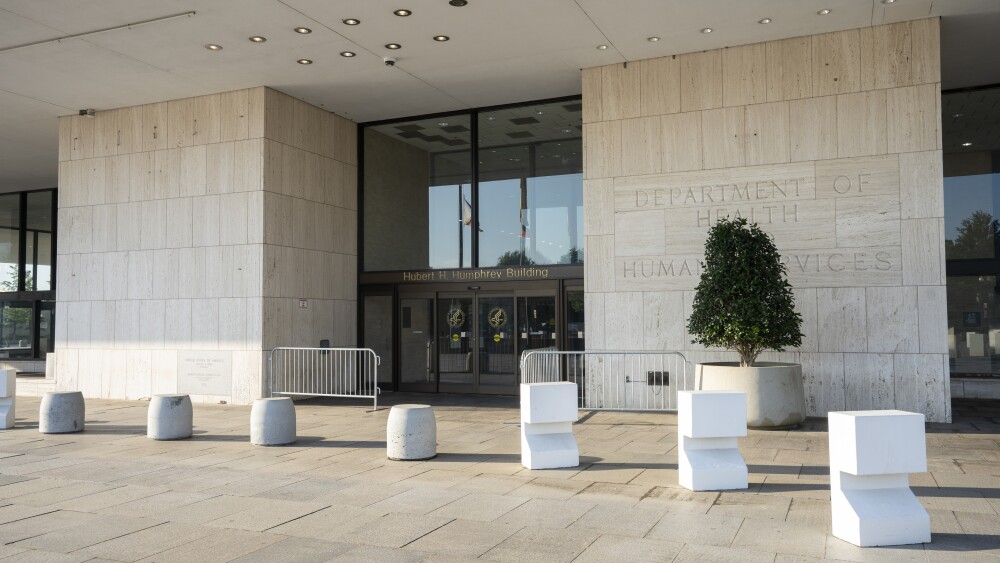The record-setting government shutdown was just the latest blow to the U.S. biopharma industry. When science funding becomes a casualty of political gridlock, we lose valuable talent, erode public trust and jeopardize our position as a global leader in innovation.
The world’s most powerful early-stage innovation incubator is faltering. For decades, U.S. federal grants and Small Business Innovation Research (SBIR) contracts have fostered basic discovery and commercial development. These programs fund early research that is too risky, young or long-term for private investors. But today, many scientists, engineers and early companies find themselves at a standstill—not just because of the now-ended government shutdown, but because of the growing normalization of underfunding science.
My company, Neurovation Labs, was fortunate to be funded for nearly five years by multiple defense SBIRs and federal awards, which kick-started our precision neuromedicine pipeline. That kind of public investment gave us the time and support to pursue a promising idea and develop it into a real solution with the potential to improve tens of millions of lives.
Stories like ours are common in biopharma. But that innovation engine is now at risk. The recent National Institutes of Health (NIH) funding freeze, caused by the budget impasse, halted new grants, paused peer review operations and led to numerous layoffs. The NIH funding processes now face a backlog and uphill battle to get back on track. Such pauses in federal funding mechanisms freeze the biotech pipeline at its earliest stage, halting the critical, high-risk research that must begin long before any medicine can reach a patient. Timelines are derailed and momentum is lost. In biotech, where every month matters, this can mean the end of a program altogether.
The 43-day shutdown that ended earlier this month is more than a short-term inconvenience. It is a warning about the fragility of America’s scientific enterprise, where even brief interruptions can stall years of work. Beyond this immediate crisis lies a deeper threat: long-term cuts and chronic underinvestment in science. When scientific agencies become budgetary bargaining chips, the long-term cost is measured not only in missed grants or delayed approvals, but in lost talent, lost trust, lost leadership and, ultimately, lost lives.
The Far-Reaching Consequences of Federal Funding Cuts
Since World War II, America’s scientific leadership has rested on public funding for the kind of research that can improve public health, strengthen national security, grow the economy and keep us globally competitive. Our greatest achievements—cancer therapies, vaccines, even the drugs transforming diabetes and obesity care today—began as high-risk, publicly funded ideas. These breakthroughs did not start with a profit plan; they started with NIH funding and peer-reviewed science.
Private capital is not structured to take on this kind of preliminary, uncertain research, especially in fields like neuroscience, rare diseases or complex diagnostics that have historically high failure rates and long timelines. That is why NIH funding is so essential. Without initial support, foundational research never becomes real-world therapies. The pipeline collapses before it begins.
Across the country, startups are suddenly facing a funding cliff that could cause just such a collapse. Translational research, the essential bridge between academic discovery and commercial development, is stalled. Investors, cautious in a volatile economic climate, are hesitant to back ventures at earlier stages, leaving companies more dependent on alternative funding sources like the government to advance their R&D. Without a functioning NIH, many companies will simply run out of time and money. Vital research efforts will never make it to the clinic.
The damage is not limited to biotech startups. NIH funding underpins our entire scientific ecosystem, from fellowships and training grants to career development for the next generation of researchers. When those funds disappear, so does the workforce pipeline as researchers, especially early-career scientists, leave the field. The effects may not be obvious overnight, but they are real, and they are long-lasting.
Meanwhile, our global competitors are investing aggressively in R&D. China, the European Union, and others are expanding public research funding, building the next generation of medical innovation and attracting top talent. If the U.S. continues down this path of volatility and decline, we risk ceding the leadership we have spent decades building.
Science does not stop being important when budgets get tight. In fact, that is when smart investment matters most.
At Neurovation Labs, we remain committed to our mission of developing precision neuromedicines for mental health disorders like post-traumatic stress disorder (PTSD). But small biotechs like ours cannot do it alone. Particularly in the early stages, we need a stable federal partner, one that sees science as a national imperative worth protecting.
The future of American innovation does not start in a boardroom. It starts in a lab. Today’s investment leads to tomorrow’s breakthroughs, and if we abandon that investment now, we will lose out on untold treatments and cures.






